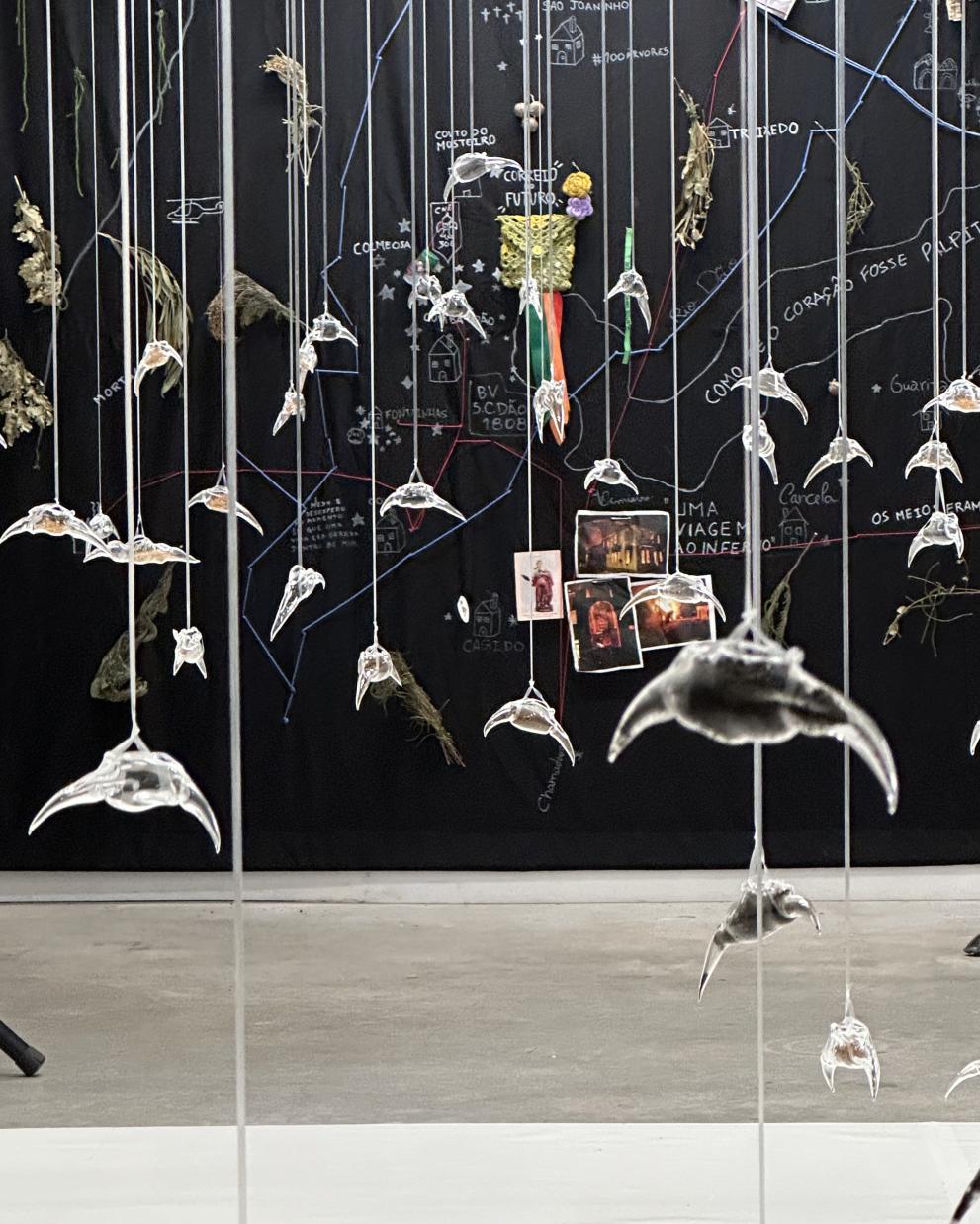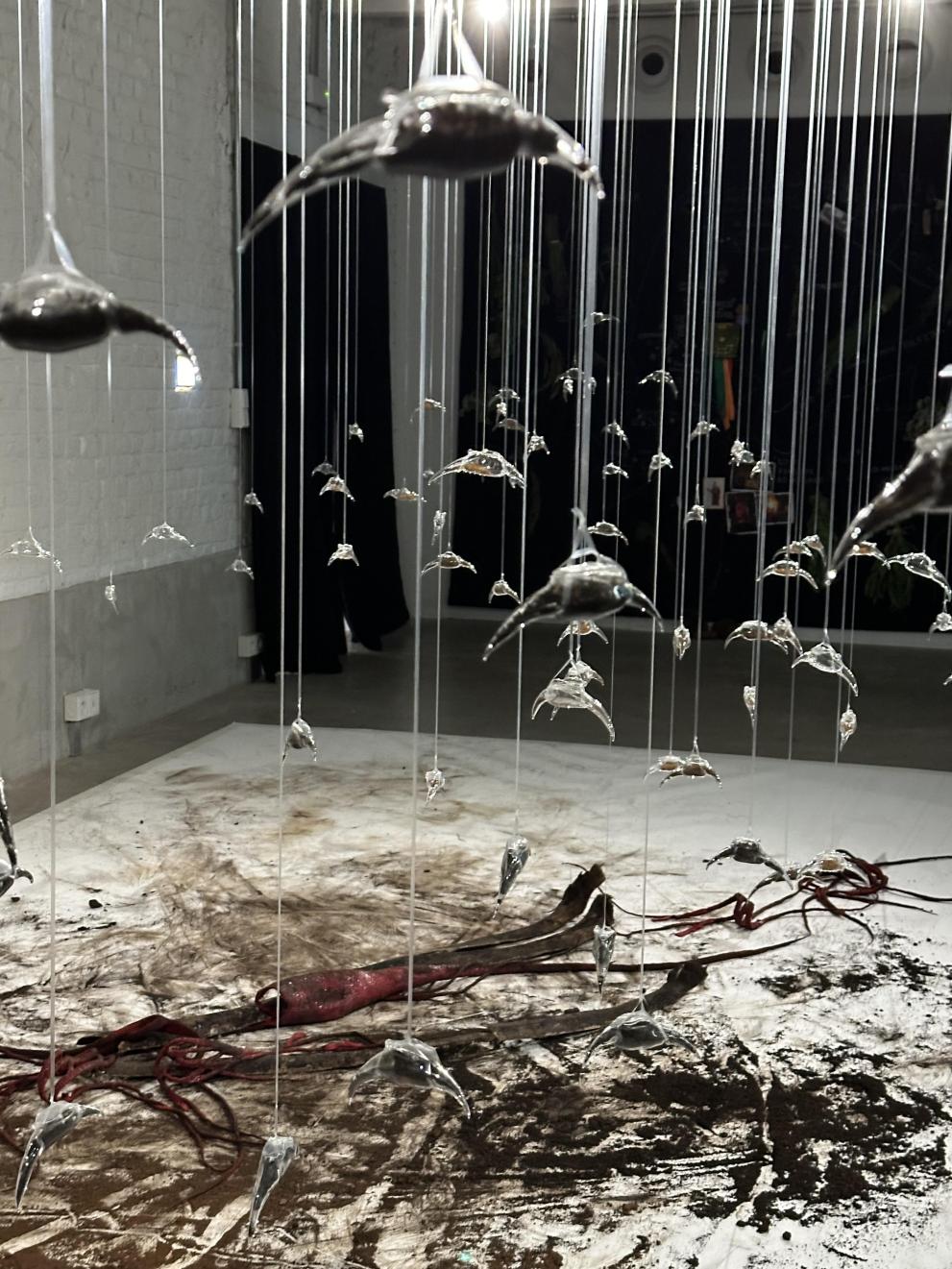
Lament explores post-wildfire ecology in soil, offering a space where ecological and more-than-human death and grief are dignified and where fires are treated as a phenomenon that belongs to the co-evolution of ecosystems and humans. At the same time, the work engages with current ecological shifts and fractures, encompassing changing fire regimes, vulnerable ecosystems, and their less perceivable but highly relevant interplay with soil.
Developed over eighteen months of research, the work combines ecological observation, bioart, sculpture, exchange with scientists and independent experts, musical composition, philosophical inquiry and encounters with communities who experienced devastating wildfires. The latter resulting in an emotional fire-scar map.
Lament features a performance with sounds of cello and burned wood. Onstage are organic elements from a wildfire site and sculptural pieces: hanging glass sculptures containing soil, soil on the floor and a costume made of tree barks. After the performance, these remain as a more-than-human deathbed installation for the exhibition. The audience is invited to notice the tiny changes inside the glass sculptures, which evoke untold stories of soil ecology.
Performance and installation with burned soil microbiome, moss, burned wood, glass sculptures, cello and live electronics. Duration of the performance: 50 min
Margherita Pevere with Ivan Penov | Céline Charvériat, Lucía Iglesias Blanco & Diana Vieira Community engagement program in Santa Comba Dão (PT) with the support by ForestWISE and FIRE RES
Residency Project: https://science-art-society.ec.europa.eu/lament
Presentation of Residency @ JRC: https://science-art-society.ec.europa.eu/presentations-residency#naturarchy-presentations-of-residency

